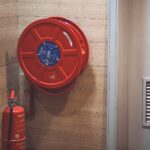Written by James Summers, CEO, Conker
It’s a challenge to think of many, if any, companies that don’t capture data in our technology-advanced business world.
Many different industries increasingly rely heavily on the use of devices – with portable devices, including wearables, passing data through organisations to enhance the business’ performance. Some new emerging markets for tech and data-enabled operations, such as hospitality, have been accelerated by the explosion of technological advancement and changes in customer behaviour, as a result of the Covid-19 pandemic.
Managing complexities using data
Those working in complex environments, including warehousing, manufacturing, transport and logistics and utilities, rely on real-time information that provides visibility of all elements of the supply chain; of where goods are or how critical services are being delivered. The cost of failure can be substantial, not just in the cost of downtime, but also in terms of customer experience and brand reputation.
If we consider a complex operation, such as a warehouse, these fast-moving fulfilment facilities not only have to utilise space effectively, but warehouse managers also need to manage the efficient and accurate flow of orders and deliveries against an optimised inventory. All this must be done whilst managing costs, as in this sector, time literally is money.
Insights and accuracies are the biggest gain for any size of business that captures operational data. As business data sets grow, analytics help executives see patterns that enable them to make predictions and strategies for planning and communication. It also supports managers in optimising workflows, enabling them to quickly detect and resolve incidents and provides direction to staff to deliver the priorities of the business.
Connectivity must be considered
Capturing essential business data requires having devices that are reliable and appropriate for the environment and easy for staff to use – helping them to get more done, with high levels of accuracy.
Updating and retrieving information quickly is essential to maximise efficiency and productivity. However, harsh working environments, such as locations that are dusty, dimly lit, open to variable weather conditions or with vehicles in operation, make this difficult.
There are ranges of well-developed products that can be used by workforces in harsh environments, including rugged wearable Android companion devices that allow the wearer to safely do their job and complete computerised processes, whilst keeping both hands free. From operating machinery, to troubleshooting and monitoring machine performance, wearables are designed specifically to perform with constant use and without compromising the user in the efficiency of their movement.
These products can be further supported by automation and real-time connectivity with other departments. This seamless integration can increase production, reduce resource usage, and improve the speed of response to customisation and amendments to orders – ultimately resulting in improved bottom lines.
Service and support is often overlooked
Extreme working conditions are not limited to high and low temperatures, but also include humidity, wet conditions, direct sunlight, snowfall and ice, altitude, atmospheric pressure, low visibility, complex terrain and vibration. For example, in cold or hazardous environments touch screens need to be designed to be operated with gloves, and equally usable in direct sunlight.
Selecting the appropriate device for hard-working environments is important, however service from the device provider should not be overlooked. There is a common perception that critical downtime occurs because of hardware failure, when in fact the biggest drag to an operation is service delay. Extreme conditions call for a choice of rugged devices that are fit-for-purpose, deliver value for money, and come with service levels that match the demands of the job and environment. Could your business afford to wait 12 weeks for a replacement device, or days for inefficient and slow customer service?
When devices are being subject to continuous tough conditions, repair and replacements should be expected and prepared for, particularly in high-pressure industries. To fulfil data needs, operations must consider the end-to-end process, from the business need, to systems, compatibility, fit-for-purpose devices, user adoption, data analytics and insights, as well as the time to replace and repair.
There is no time for downtime in a mission and time-critical environment. In our experience keeping maintenance and service moving swiftly can be more critical to the data that’s keeping goods moving than businesses think.


